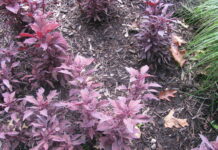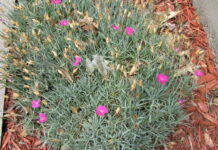Photo credit: DiasporaEngager (www.DiasporaEngager.com).
Investigation and Results
Identification of the Outbreak and Characteristics of Cases
Shiga toxin–producing Escherichia coli (STEC) O157:H7 is an enteric illness that can cause hemolytic uremic syndrome (HUS), a severe, life-threatening condition which affects the kidneys; young children (aged <5 years) are among the most susceptible to HUS. During July 25–30, 2023, six cases of STEC O157:H7 illness in children were reported to the Utah County Health Department (UCHD), with onset during July 22–27. All six ill children lived in city A, Utah. UCHD investigators interviewed the identified children’s parents using standard case investigation forms to assess various exposures before illness onset. Preliminary whole genome sequencing (WGS) found that two ill children’s clinical isolates were zero alleles different from each other, suggesting that an outbreak was occurring. On July 31, an outbreak investigation was initiated.
Investigators identified 13 children with confirmed STEC O157:H7 illness linked to this outbreak, with illness onsets during July 22–August 31 (Figure 1). The median patient age was 4 years (range = 1–15 years). Seven patients were hospitalized, including two with HUS; no deaths were reported. This activity was reviewed by CDC, deemed not research, and was conducted consistent with applicable federal law and CDC policy.*
Association of Outbreak with Exposure to Untreated, Pressurized, Municipal Irrigation Water
Investigators developed a questionnaire to obtain additional exposure information for these cases and those that were later identified, including details regarding exposure to untreated, pressurized, municipal irrigation water (UPMIW), which had frequently been reported in preliminary interviews. UPMIW is surface water piped from reservoirs to homes; it is intended for outdoor landscapes (lawns and gardens) and is not suitable for drinking or recreational activities. UPMIW is not routinely monitored or tested.
All city A residences and businesses have outdoor connections to the UPMIW system. City A’s UPMIW is primarily sourced from mountain snow melt and is carried >30 miles (>48 km) by a river and an underground pipeline to several open UPMIW reservoirs within city A and surrounding communities before being pumped to residential connections. Secondary sources of city A’s UPMIW system comprise public wells and natural surface waters, including nearby rivers and creeks.
Twelve of 13 ill persons reported UPMIW exposure in city A during the week before symptom onset, including playing with hose water (five), inflatable lawn water toys (three), and water tables (two); drinking (two); and running through sprinklers (one). Among seven ill persons with discrete UPMIW exposure dates, the median incubation period was 3 days (range = 1–5 days). The one ill person who did not report UPMIW exposure was not a city A resident but did report spending time in city A during the week preceding symptom onset. No ill persons are known to have eaten noncommercial produce irrigated with UPMIW.
Environmental Investigation
On August 14, investigators conducted an environmental investigation at two of city A’s UPMIW reservoirs and nine sites where persons with confirmed illness reported UPMIW exposure, including private homes. Investigators collected large-volume water samples by dead-end ultrafiltration and grab samples (unfiltered water collected in 1 liter bottles according to Environmental Protection Agency and CDC protocols†); samples of sediment and bird feces from the reservoirs; and swabs of spigots, hoses, toys, and other surfaces likely to have had contact with UPMIW. Investigators observed birds on and around UPMIW reservoirs during the environmental investigation; no other animals or obvious potential sources of STEC O157:H7 were observed during sampling.
Laboratory Investigation
Investigators submitted samples of bird feces to the Utah Public Health Laboratory for STEC O157:H7 culture and submitted all other environmental samples to CDC for culture of STEC O157:H7 (1–3), followed by WGS of confirmed STEC O157:H7 isolates. Grab water samples were tested for generic E. coli and total coliforms per 100 mL. Microbial source tracking was performed for all dead-end ultrafiltration samples and both reservoir sediment samples (4–6). Microbial source tracking is used to detect microbial markers specific to the feces of avian species, ruminants (such as cattle, sheep, and deer), and humans (all known fecal shedders of STEC).§ Clinical laboratories submitted stool samples from ill persons to the Utah Public Health Laboratory for STEC O157:H7 culture, isolation, and WGS.
STEC O157:H7 was isolated from UPMIW reservoir sediment and dead-end ultrafiltration water samples from five of nine exposure sites. STEC O157:H7 was not detected in any other environmental samples collected.
WGS results indicated clinical isolates were within 0–1 allele difference of each other, and the environmental isolates were all within 0–2 allele differences of the clinical isolates by core genome multilocus sequence typing (Figure 2).¶ All sequencing analysis was conducted using the WGS analysis software platform (version 7.6; BioNumerics). Results from generic E. coli and total coliform testing performed on water grab samples were variable (Table), and two exposure sites with detectable STEC O157:H7 had no detectable coliforms or generic E. coli (<1 most probable number per 100 mL). Of 12 samples analyzed by microbial source tracking (10 dead-end ultrafiltration and two sediment), avian, ruminant, and human fecal markers were detected in 10, six, and one dead-end ultrafiltration samples, respectively, and the avian marker was detected in both sediment samples.
Source of original article: Centers for Disease Control and Prevention (CDC) / MMWR (Journal) (tools.cdc.gov).
The content of this article does not necessarily reflect the views or opinion of Global Diaspora News (www.GlobalDiasporaNews.com).
To submit your press release: (https://www.GlobalDiasporaNews.com/pr).
To advertise on Global Diaspora News: (www.GlobalDiasporaNews.com/ads).
Sign up to Global Diaspora News newsletter (https://www.GlobalDiasporaNews.com/newsletter/) to start receiving updates and opportunities directly in your email inbox for free.






























